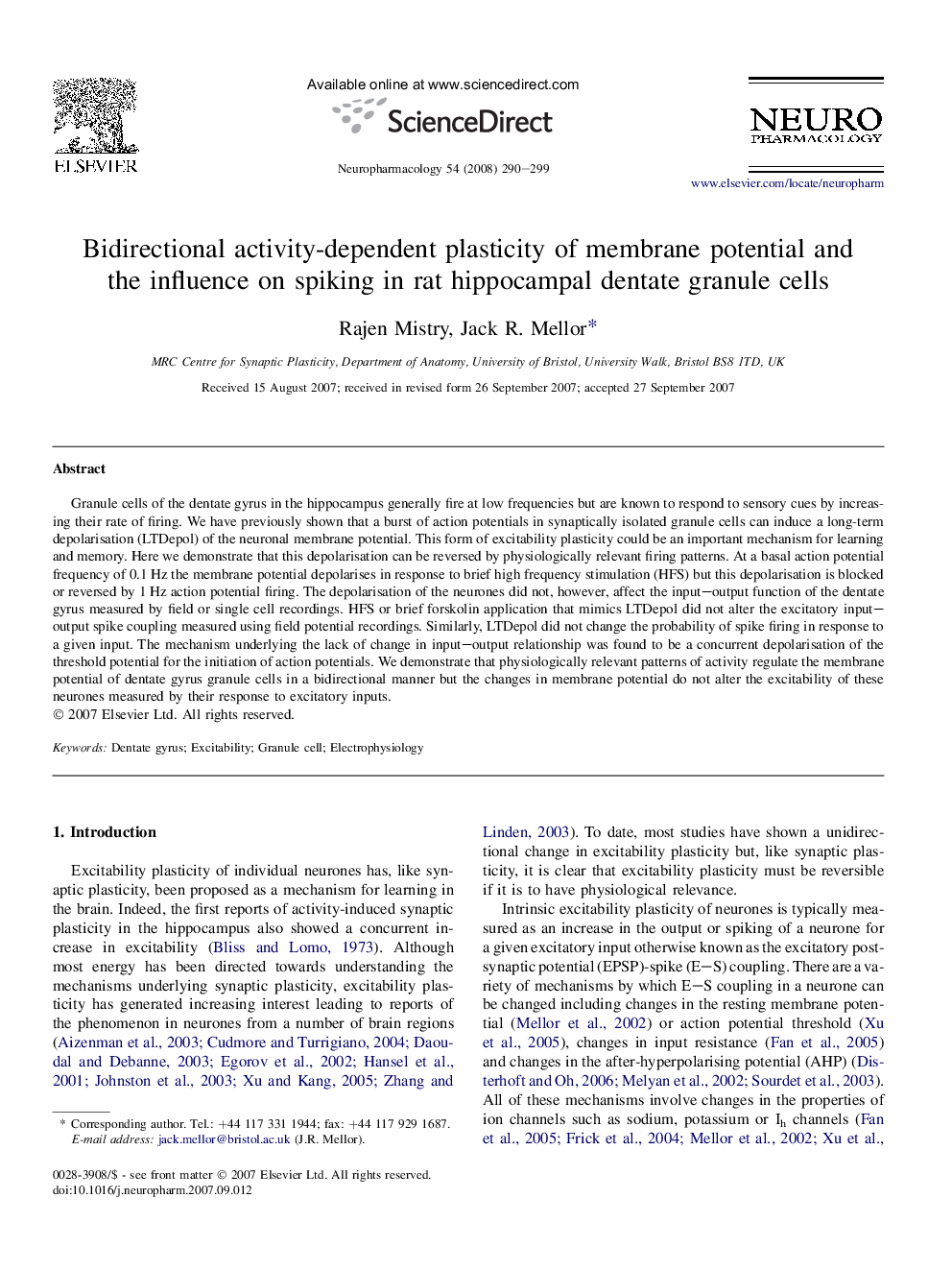| Article ID | Journal | Published Year | Pages | File Type |
|---|---|---|---|---|
| 2494551 | Neuropharmacology | 2008 | 10 Pages |
Granule cells of the dentate gyrus in the hippocampus generally fire at low frequencies but are known to respond to sensory cues by increasing their rate of firing. We have previously shown that a burst of action potentials in synaptically isolated granule cells can induce a long-term depolarisation (LTDepol) of the neuronal membrane potential. This form of excitability plasticity could be an important mechanism for learning and memory. Here we demonstrate that this depolarisation can be reversed by physiologically relevant firing patterns. At a basal action potential frequency of 0.1 Hz the membrane potential depolarises in response to brief high frequency stimulation (HFS) but this depolarisation is blocked or reversed by 1 Hz action potential firing. The depolarisation of the neurones did not, however, affect the input–output function of the dentate gyrus measured by field or single cell recordings. HFS or brief forskolin application that mimics LTDepol did not alter the excitatory input–output spike coupling measured using field potential recordings. Similarly, LTDepol did not change the probability of spike firing in response to a given input. The mechanism underlying the lack of change in input–output relationship was found to be a concurrent depolarisation of the threshold potential for the initiation of action potentials. We demonstrate that physiologically relevant patterns of activity regulate the membrane potential of dentate gyrus granule cells in a bidirectional manner but the changes in membrane potential do not alter the excitability of these neurones measured by their response to excitatory inputs.
